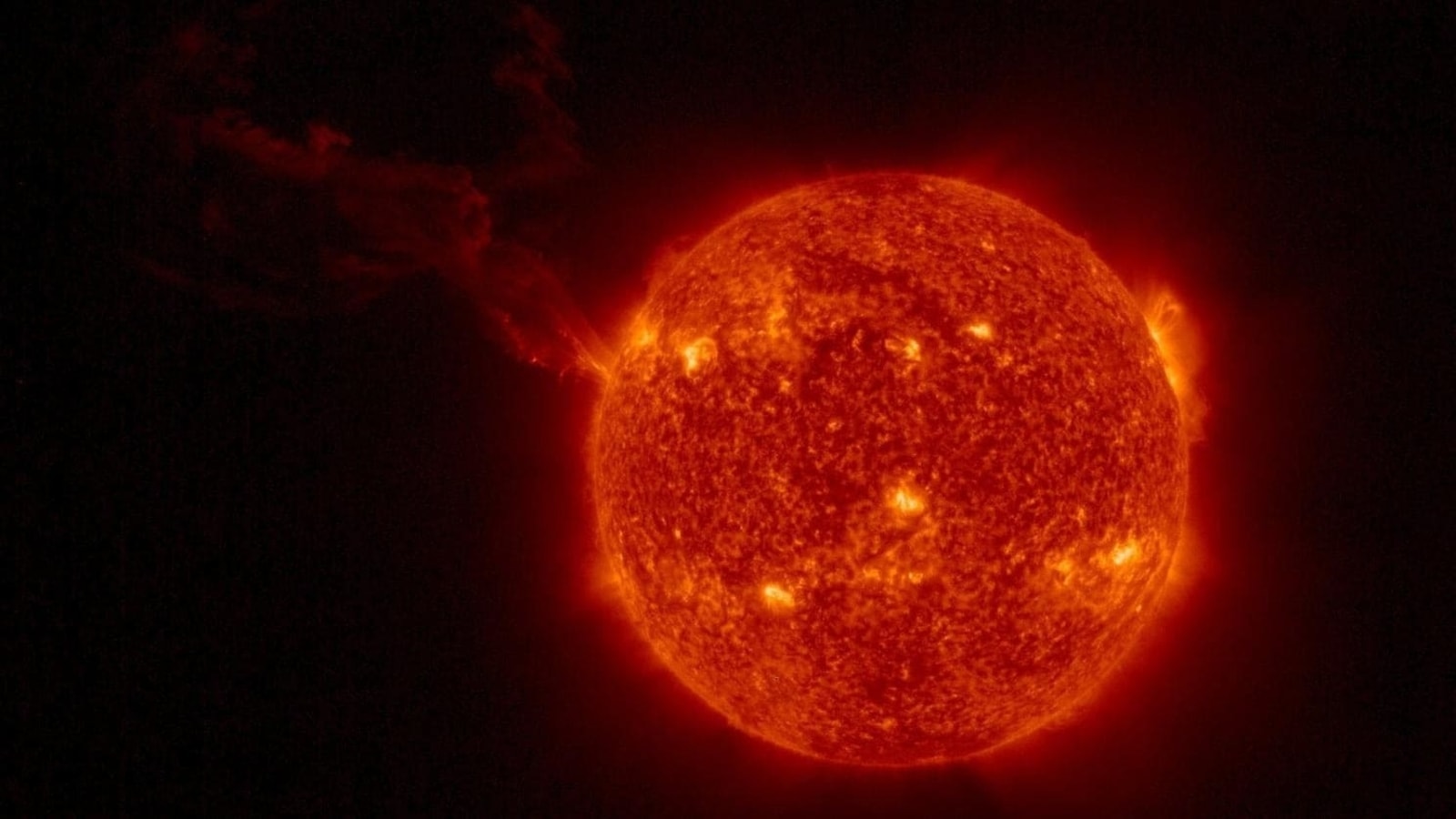Fastest solar winds in years churn TERRIFYING solar storm on Earth; More expected
Fastest solar winds in years, moving as fast as 800 km/s, shook the Earth with a powerful G-3 class solar storm yesterday, February 27. More solar storms are expected later today.






 View all Images
View all ImagesOn February 24, it was first reported that the Sun was suffering from chain explosions caused by the sunspot AR3229 igniting multiple solar flares within itself that released huge amounts of solar particles into space. The National Oceanic and Atmospheric Administration (NOAA) reported that a double blow was coming for the Earth with a solar wind stream and a coronal mass ejection (CME) cloud both headed towards the Earth. Yesterday, February 27, the solar storm finally struck our planet and it was a terrifying event marked with the fastest solar winds seen in years and the most intense solar storm of 2023. To make matters worse, more such solar storms are expected to strike the Earth today.
The development was reported by SpaceWeather.com which noted that the NOAA DSCOVR satellite was not able to see the CME storm strike the Earth due to a grounding fault on February 27. But when it regained its senses, “ the solar wind speed had jumped to 800 km/s, the highest value in years. The CME might have arrived during that time. If so, it means the peak of the storm occurred on Feb 27th at category G3, and we can now expect subsiding G1- to G2-class activity on Feb. 28th”.
Intense solar storm hits the Earth
The G3-class solar storm event was so strong that aurora lights were seen in the UK, and parts of Europe including Norway and Denmark. Shockingly, the northern lights were seen as far as Colorado in the USA.
A G-3 class solar storm is moderately strong and can damage satellites, cause disruption in wireless communications (GPS, low frequency transmissions) and cause fluctuations in power grids on ground. They can also interfere with mobile networks and destroy internet connection. However, the solar storm did not impact any systems for long periods of time or irreparably so.
Things have been heating up for the Sun and it is considered that solar activity can get even worse in days to come. This is likely to continue till 2025 when the Sun will finally reach the peak of its current solar cycle.
DSCOVR satellite's role in solar weather monitoring
NOAA monitors the solar storms and Sun's behavior using its DSCOVR satellite which became operational in 2016. The recovered data is then run through the Space Weather Prediction Center and the final analysis is prepared. The different measurements are done on temperature, speed, density, degree of orientation and frequency of the solar particles.
Catch all the Latest Tech News, Mobile News, Laptop News, Gaming news, Wearables News , How To News, also keep up with us on Whatsapp channel,Twitter, Facebook, Google News, and Instagram. For our latest videos, subscribe to our YouTube channel.





























